PinotFile: 6.49 December 26, 2007
|
Pinot Noir All-Americans 2007This is the time of year when “Best Of” lists appear everywhere and what better analogy for great American Pinot Noir than to name the top performers “All-Americans.” I am excited to present the 48 Pinot Noir All-Americans of 2007, the best wines I drank over the past year. The consistent and widespread high quality of Pinot Noirs produced in California and Oregon makes it challenging to pick those that stood out from the pack. It is a testimony to the cadre of passionate winegrowers who have scoffed at the suggestion that Pinot Noir is a “heartbreak grape,” and have successfully corralled the grape’s temperamental nature. The 2007 All-Americans were chosen in the spirit of celebration of the great bounty of Pinot Noir that we enjoy in this country. These particular American Pinot Noirs were selected as much for their fruity, flirty, New World hedonism as their description- defying sensuality. Veronique Drouhin, winemaker at Oregon’s Domaine Drouhin, echoes my sentiments perfectly when she said, “There are lots of good wines in the world that give you pleasure. A great wine gives you emotion.” The stylistic split of power versus finesse or “New World” against “Old World,” is still ever present, but which style succeeds best is becoming a tired argument. Most New World winemakers admit that they are trying to make the best wine they can from their vineyards and not trying to imitate Old World Burgundy. The growing conditions in the New World provide more upfront fruitiness, extraction and higher alcohol and the resultant Pinot Noirs have even assumed numerous monikers such as “Big Babe Pinots,” “Jelly-Jar Blockbusters,” “Pinot on Steroids,” and “Caliesque.” They have been likened more to Pamela Anderson than Katherine Hepburn. The Old World traditionalists argue that their wines go best with food. French Burgundy can be lighter, less fruity, higher in acid and lower in alcohol and correspondingly, they appear more like see-through red lingerie than Jimi Hendrix purple. Many Pinot Noirs strike a balance between the two extremes. Most pinotphiles can enjoy and appreciate both styles and relish in the diversity. I should clarify the steps I take to arrive at the wines I recommend in the PinotFile during the year and those that make the All-American list at year’s end. I taste Pinot Noir daily in a quiet home setting. The wines are sampled at cellar temperature and are usually tasted over a few hours both without food and often with food in a relaxed atmosphere so as to replicate the consumer’s drinking experience. I do not taste for the most part blind, but strive for integrity, consistency, and objectivity. The aim of judgment,” French wine critic Michael Bettane says, “Is truth and impartiality.” I have no monetary attachment to any winery, retailer or wholesaler, and accept no advertising. I do accept some wines for review, but over 85% of the wines I sample are purchased directly from the winery or through retail channels. There are a number of Pinot Noirs that I sample that for one reason or another to do appeal to me and I feel I cannot recommend. These wines are not featured in the PinotFile because I see no benefit of negative reviews. This is born out of respect for the hard work involved in the making of wine, and honors the reality that we all have different tastes. Of the more than 1,500 American Pinot Noirs I tasted this past year, there were a number that had interesting stories to tell, but I could not recommend them, and thus, they were not included in the PinotFile. I don’t award scores to wines, preferring to give an unpretentious and concise description of the style and spirit of the wine that the reader can appreciate. Wineries prefer scores for marketing purposes, but from feedback I receive from readers, I am convinced that they value an apropos description even more. I do not try to take the reviews or myself too seriously. I preach to the reader to use my tasting notes as a guide, but above all else, trust his or her own palate, their patrimony. I do want to acknowledge my wife’s occasional input. I think this is valuable, as she does not give a hoot about the label or producer, only how the Pinot Noir tastes. Lets face the truth, women have incredibly good palates. Beyond the emotional highlights of a wine which weigh heavily on their enjoyment, there are certain technical aspects of a wine that must be addressed to arrive at the judgment of quality. A quality wine is spoken reverently as “a complete wine.” In a complete wine, all of the parts go together harmoniously and a complete range of elements make up the whole. This is an accolade that only goes to wines with all of the following attributes:
Taste: A complete wine will have more than one family of flavors and all of the flavors are I in harmony. Tastes are sensed on the tongue and each flavor remains evident for a length of time that determines persistence. Texture: Often referred to as mouth feel, unctuousness or roundness (moelleux), texture is the tactile sense of wine in the mouth, on the tongue and in the throat. It is the fabric of a wine. Quality wines are often described as smooth, silky, velvety, well-knit, glossy or polished while lesser ones as flabby, loose-knit, granular, or coarse. Silky textures are unique to Pinot Noir and give the wine its sexiness. Finish: Finish refers to the final sensations of wine on the palate. A complete wine will have both a long aromatic finish lasting several seconds and an appealing taste (fruit, acidity, alcohol, astringency) at the end. Balance: A term used synonymously with harmony that refers to the relative levels of acidity, alcohol, tannins and roundness that are felt in the mouth. Aromas have nothing to do with balance. A well-balanced wine has all of these elements in equal amounts with no element predominating. A complete wine will have impeccable balance. If a wine is unbalanced early in its life, it will never become balanced, no matter how long it is aged. Aftertaste: This term is often used synonymously with finish. For clarity’s sake, aftertaste refers to the flavor and olfactory impressions that remain after the wine is swallowed or spit out. A quality wine is described as having “length” when the clean, balanced, and full flavors of the finish linger in the aftertaste. Flaws in wine may be perceived in the aftertaste that otherwise might have been overlooked. The most common complaint is a bitter or astringent aftertaste, heightened by the fact that bitterness, sensed mainly at the back of the tongue, also has the longest flavor persistence. Aftertaste is the final indicator of a wine’s overall quality, confirming not only if it is balanced and complete, but also whether it rates such adjectives as elegance, breeding and finesse. I consider the All-American wines, particularly the First String, to be complete or close to complete wines. These wines have been reviewed with appropriate tasting notes in past issues of this year’s PinotFile. Descriptors in most cases do not do these wines justice. It is often what is not written, but that which is emoted that truly defines a wine’s greatness. I hope that I have at least conveyed that certain sensuality possessed by great Pinot Noir - so easy to covet, yet at once so difficult to describe. Prices for North American Pinot Noir run the gamut from $7 to over $100, but generally life begins at $40. Collecting and drinking Pinot Noir has become a rich man’s game and trophy wines (“Deeppocket Pinots”) now often sell in the $80-$100 range. Fortunately, there are a number of perfectly fine Pinot Noirs on the market that retail for less than $28 and the increasing number of these so-called value Pinot Noirs makes Pinot Noir more available now than ever (see page 6, “Best American Value Pinot Noirs”). Many of the All-American Pinot Noirs are sold out at the winery and only available, if at all, on the secondary and auction market. There are a number of useful search engines for finding the Pinot Noir of your dreams: www.winezap.com, www.wine-searcher.com, www.wineaccess.com, and www.vinquire.com. Keep in mind that there will always be another vintage, and top producers make quality wine in most every vintage. It will not be the same song, but it will be the same composer.
The wines chosen were ones enjoyed in 2007, regardless of year of release. In many cases, they are the most recent release. They are included based on merit, independent of price, style and region of origin. For the first time, I have also included a listing of memorable Burgundies, outstanding Pinot Noirs from countries other than the USA and France, and other special wines (yes, I do drink a few wines other than Pinot Noir) that I particularly enjoyed in 2007. The awarded wines are listed in alphabetical order beginning on the next page. An asterisk after the wine indicates that the wine is probably still available from the winery or retail sources. For those wines that were left out this year, the words of Mark Twain ring true, “It is better to deserve honors and not have them, than to have them and not deserve them.” First Team Pinot Noir All-Americans 20072002 Calera Mills Vineyard Mt. Harlan Pinot Noir $43* 2003 Calera Jensen Vineyard Mt. Harlan Pinot Noir $45* 2005 Drew Fog-Eater Anderson Valley Pinot Noir $35* 2005 george Vintage III Nuptial Vineyard Russian River Valley Pinot Noir $50 2004 Harmonique Delicacé Anderson Valley Pinot Noir $55* 2002 Littorai Thieriot Vineyard Sonoma Coast Pinot Noir $55 2004 Littorai Savoy Vineyard Anderson Valley Pinot Noir $55 2004 Privé Le Sud Yamhill County Willamette Valley Pinot Noir $50 2004 Privé Le Nord Yamhill County Willamette Valley Pinot Noir $50 2003 Radio-Coteau Hellenthal Vineyard Sonoma Coast Pinot Noir $42 2004 Windy Oaks Proprietor’s Reserve Santa Cruz Mountains Pinot Noir $45
Second Team Pinot Noir All-Americans 20072005 Alta Maria Bien Nacido Vineyard Santa Maria Valley Pinot Noir $35* 2005 Anam Cara Cellars Nicholas Estate Chehalem Mountains Willamette Valley Pinot Noir $30* 2004 Brogan Cellars Summa Vineyard Young Vines Sonoma Coast Pinot Noir $60 2003 Et Fille Seven Springs Vineyard Eola-Amity Hills Willamette Valley Pinot Noir $45* 2005 Gypsy Canyon Winery Lot 2 Santa Rita Creek Vineyard Santa Rita Hills Pinot Noir $75 2004 Lynmar Five Sisters Russian River Valley Pinot Noir $80 2005 Paul Lato Duende Gold Coast Santa Maria Valley Pinot Noir $50 2005 Pey-Marin Trois Filles Marin County Pinot Noir $39* 2004 Roessler Savoy Vineyard Anderson Valley Pinot Noir $38 2005 Saintsbury Brown Ranch Vineyard Carneros Pinot Noir $60* 2005 WesMar Hellenthal Vineyard Sonoma Coast Pinot Noir $50
Honorable Mention Pinot Noir All-Americans 20072005 Anthill Farms Winery Tina Marie Vnyd Russian River Valley Pinot Noir $43 2006 Ardiri Estate Grown Napa Carneros Pinot Noir $45* 2005 Athair Russian River Valley Pinot Noir $35* 2005 Bybee B Vineyards & Habitat Green Valley Estate Blend Pinot Noir $55* 2004 Clos Saron Home Vineyard Sierra Foothills Pinot Noir $45 2004 Chehalem Reserve Chehalem Mountain Willamette Valley Pinot Noir $50* 2004 Copeland Creek Sonoma Coast Pinot Noir $30* 2004 Davis Family Russian River Valley Pinot Noir $30* 2005 De La Montanya Tina’s Vineyard Russian River Valley Pinot Noir $32 2005 DuMol Russian River Valley Pinot Noir $60* 2004 Eric Kent Wine Cellars Stiling Vnyd Russian River Valley Pinot Noir $38 2002 Fiddlehead Lollapalooza Sta. Rita Hills Pinot Noir $50 2005 Halleck 3 Sons Cuvee Russian River Valley Pinot Noir $38* 2005 Inman Family Wines OFG Russian River Valley $45* 2005 J Lynne Russian River Valley Pinot Noir $25* 2005 Kosta Browne Kanzler Vineyard Russian River Valley $62 2005 Londer Estate Grown Anderson Valley Pinot Noir $50 2004 Miller Wine Works Kendric Vineyard Marin County Pinot Noir $36* 2005 Red Car Wine Co Amour Fou Sonoma Coast Pinot Noir $55 2004 Ridgeway Two Pisces Vineyard Sonoma Coast Pinot Noir $30* 2003 Sonoma Coast Vineyards Sonoma Coast Pinot Noir $60* 2005 Twomey Cellars Russian River Valley Pinot Noir $50* 2003 WesMar Piner Ranch Vineyard Russian River Valley Pinot Noir $45* 2004 Windward Vineyard Gold Barrel Select Paso Robles Pinot Noir $54* 2004 Winter’s Hill Vineyard Reserve Willamette Valley Pinot Noir $50 2004 Woodenhead Wiley Vineyard Anderson Valley Pinot Noir $46*
Best American Value Pinot Noirs 2007*2006 Buena Vista Ramal Vineyard Carneros Pinot Noir $23 2004 Bogle Russian River Valley Pinot Noir $13 2004 Castle Vineyards & Winery Sangiacomo Vineyard Carneros $26 2004 Castoro Cellars Blind Faith Vineyard Paso Robles Pinot Noir $20 2006 Five Rivers Winery Central Coast Pinot Noir $13 2006 Girasole Mendocino Organic Pinot Noir $15 2005 Hahn Estates Monterey Pinot Noir $23 2005 Hayman & Hill Santa Lucia Highlands Pinot Noir $14 2005 Hunterdon Santa Lucia Highlands Pinot Noir $15 2005 Irony Monterey County Pinot Noir $15 2004 J Swan Cuvee da Trois Russian River Valley Pinot Noir $23 2005 Kiara Reserve Paso Robles Pinot Noir $20 2006 Longboard Vineyards Russian River Valley Pinot Noir $28 2005 Lucas & Lewellyn Vineyards Santa Barbara County Pinot Noir $20 2003 McHenry Estate Santa Cruz Mountains Pinot Noir $19.50 2004 McHenry Estate Santa Cruz Mountains Pinot Noir $21.50 2005 King Estate Oregon Pinot Noir $26 2004 Renteria Knittel Vineyard Carneros Pinot Noir $25 2006 Rodney Strong Estate Russian River Valley Pinot Noir $22 2005 Tipsy Dog Crazy Jay’s Vineyard Edna Valley Pinot Noir $28 2006 Ventana Vineyards Arroyo Seco Pinot Noir $28 2005 Willamette Valley Vineyards Oregon Pinot Noir $25
Burgundies of Great Interest in 20072005 Domaine Aleth Girardin Beaune Clos des Mouches 1er $55 2004 and 2005 Domaine Anne Gros Bourgogne $30 2005 Domaine Claude Dugat Charmes Chambertain $600 2000 Domaine Comte Georges de Vogue Chambolle Musigny 1er 1999 Domaine De la Romanee-Conti Le Tache Priceless 2002 Domaine Drouhin Chambolle Musigny Les Amoureuses 1er $110 1997 Domaine Dujac Clos St Denis 2001 Domaine Dujac Clos de la Roche 2005 Domaine Fougeray de Beauclair Bonnes Mares $129 2005 Domaine Fougeray de Beauclair St. Jacques Marsannay $24 2005 Domaine Heresztyn Bourgogne $20 1990 Domaine Pousse d’Or Volnay Les Caillerts Clos Des 60 Ouvres Monopole 1er 2005 Domaine Violot-Guillemand Pommard Pezerolles 1er $60 2004 Maison Camille Giroud Bourgogne $18 2005 Maison Camille Giroud Beaune Cent Vignes 1er
Other Wines to Recommend from 20071997 Argyle Extended Triage Willamette Valley Sparkling Wine $40 2004 Aubert Lauren Russian River Valley Chardonnay $70 2005 Eric Kent Wine Cellars Russian River Valley Chardonnay $36.50 1999 Bollinger Grand Année Champagne $100 2003 Eldridge Estate Single Clone MV6 Victoria Australia Pinot Noir NV Fleury Carte Rouge Blanc Champagne $32 2005 Foxglove Central Coast Chardonnay (Varner) $13 2004 Gypsy Canyon Angelica Sta. Rita Hills Mission Grape Dessert Wine $120 1996 Kalin Cellars Livermore Valley Semillon $30 2004 L’Angevin Ritchie Vineyard Russian River Valley Pinot Noir $38 2005 Lynmar Vin Gris Russian River Valley $24 1998 Marcassin Marcassin Vineyard Sonoma Coast Pinot Noir 2004 Rippon Central Otago Pinot Noir $36 1979 Santa Cruz Mountains Estate Pinot Noir 1996 Tattinger Comtes de Champagne Blanc de Blancs $110 NV The Black Chook Sparkling Shiraz Victoria Australia $13 2005 Varner Amphitheater Block Santa Cruz Mountains Pinot Noir $30 2004 Windy Oaks Estate One Acre Santa Cruz Mountains Chardonnay $35
More Best OfsBest Wine Podcast: Grape Radio (www.graperadio.com) Best Pinot Noir Winery Websites: De La Montanya (www.dlm.com), Eric Kent Wine Cellars (www.erickentwines.com), B Vineyards & Habitat (www.bpinot.com), Williams Selyem (www.williamsselyem.com), Domaine Drouhin Oregon (www.domainedrouhin.com) Best Pinot Noir labels: Belle Glos, Belle Valle, Clos de la Tech, Eric Kent Wine Cellars, et Fille, Gypsy Canyon, Harmonique, MacPhail, and Red Car Best Pinot Noir Winery Newsletter: Peay Vineyards, Pisoni Vineyard, Red Car Best Pinot Noir Reference: North American Pinot Noir (John Haeger) Best Burgundy newsletters/websites: Burghound (Alan Meadows) at www.burghound.com and Burgundy-Report at www.burgundy-report.com.
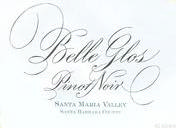  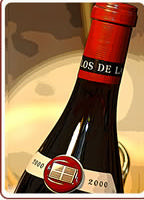 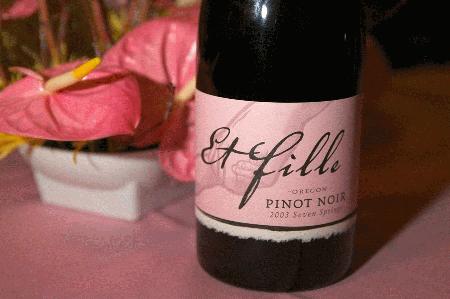 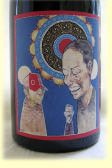 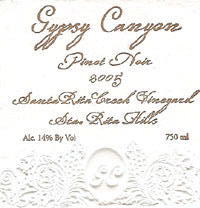 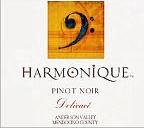 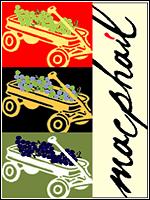 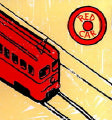
Pinot BriefsMonterey Wine Auction & Gala Monterey is fast becoming known for its excellent Pinot Noirs. The 12th Annual Monterey Wine Auction & Gala will be held on Saturday, February 16, 2008 at the newly reopened Carmel Valley Ranch. The event is sponsored by the Monterey County Vintners & Growers Association and benefits college scholarships, children of local Ag workers, the American Vineyard Foundation, and viticultural research through University California Monterey. Tickets are $165 for the “Diamonds & Denim” themed event which will include an auction of special wines, many in large formats, along with lifestyle items. Pinot Noir producers participating include Bernardus, Chalone, Estancia, Hahn Estates, Kendall-Jackson, Paraiso Vineyards, and Pessagno Winery. For information and tickets go to www.montereywines.org. The Sonoma County Wine Library This is a special collection and service of the Sonoma County Library. The library’s vast Wine Information Files are now on the web, including summaries of most articles and links to the full text of some articles at www.winefiles.org. The database also contains a large historical component. Subscribers receive additional benefits including full access to the collection and an informed staff of researchers. Chocolate Shares Health Benefits with Pinot According to the book, Heal Your Heart with Wine & Chocolate, written by Debora Yost (Steward, Tabori & Chang, New York, 2006, 271 pp, $19.95), chocolate has a lot in common with wine. Chocolate, particularly dark chocolate, helps fight heart disease by decreasing blood pressure, decreasing stickiness of platelets, and improving artery function. Quality, not quantity is most important. Recommended intake of dark chocolate is 1/2 oz to 1 oz per day or 2 oz a few times a week. Like wine, dark chocolate taken regularly in moderation, along with a proper diet and exercise can lower the risk of heart disease.  Randall Grahm Seeks Holy Grail Again in Santa Cruz Mountains In The World of Fine Wine (Issue 16, 2007), Grahm talks about his plans for a Pinot Noir vineyard in the Santa Cruz Mountains. “I will not irrigate this vineyard. If I am to plant a vineyard that truly expresses terroir, I simply cannot. The vineyard will be composed of as many different clonal selections as I can find in California.” He goes on to present his seemingly preposterous idea of growing the grapes from seedlings, germinating the seeds from the harvested fruit. The problem, of course, is that the offspring will not closely resemble their parents and many desirable characteristics will be lost in the progeny. The result will be “Pinot Noir vines producing offspring of every hue ... there should be a certain familial resonance and harmony in this ragtag collection of vines.” Only Grahm could think up something like this. Auction Wine Prices Stratospheric and Going Up Jonathan Davis wrote in The Spectator (March 17, 2007): “Risk, in its conventional financial sense, appears to have gone walkabout. Just about everything has been going up in price, and may well be going higher.” Fine wine continues to confound one of economics’ iron laws - that is prices rise, demand declines. The auction houses and brokers are attracting more business, even as their produce (wine) is becoming ever more expensive. It seems that only an asteroid can stop fine-wine prices rising higher still.” There are more wealthy collectors than ever before, particularly in Russia, the Middle East, China and India. Auctions often feature billionaires competing against billionaires for the limited number of collectable Bordeaux, Burgundy, Italian and German wines from great cellars.
Wine Serving TemperaturesChampagne, Sparkling and Dessert Wines 40° F Sauvignon Blanc, Pinot Gris 45-48° F Chardonnay, Chablis 56-60° F Pinot Noir 60-64° F Cabernet Sauvignon, Merlot, Shiraz 64-66° F
The Long and Winding Pinot RoadThis Christmas Eve I sat down to dinner with my family for a “traditional” Southern California holiday meal: chips and guacamole, salsa, tamales, refried beans and Modelo Negro beer. As we ate, I reflected upon where I started, how far I have come, and where I plan to go next year. I never drank wine growing up. Like most families in the 1950s, beer and cocktails were the drinks of choice for most adults. Alcoholic beverages were rarely seen on the dinner table, except for maybe an occasional beer when chili was on the menu. I can’t remember when I first drank a dry wine, but I think it was Champagne brought to my house by my French aunt. The quartet of wines I remember most fondly had a little sweetness. Mateus was a moderately dry rosé wine from Portugal. The story goes that the wine was invented in 1942 by Fernando Van Zeller Guedes whose family made Port and grew Vinho Verde grapes. Mateus was really the “in” drink in the 1960s and at one point the wine made up 40% of Portugal’s export income. Practically every college-age person had an empty Mateus flask that was converted into a candle holder. I also downed many bottles of another similar drink, Lancers, which had become wildly popular by the early 1970s. André Cold Duck was still another star during the 1960s, a slightly sweet sparkling wine made by Gallo from Concord grapes that was guaranteed to provide an agonizing hangover the next day. Blue Nun was the wine to order on a date. It was packaged in an impressive slim tall bottle and had a label that read Liebfraumilch (“Milk of Our Blessed Mother”). Again, this generic white wine was slightly sweet, but even better, it was cheap and low in alcohol. As I progressed through the end of high school, college and medical school during the 1960s, there was no such thing as a “varietal” wine in California. It wasn’t until 1974 that Gallo made the first varietal wines such as Hearty Burgundy and Chianti. But it was four years earlier, in 1970, that my world became transformed. To be continued… … …. |
 Smell: A complete wine will have more than one family of
aromas (fruity, floral, spices, etc). The olfactory system
enables the brain to perceive not only odors inhaled
through the nostrils, but also the aromatic qualities of a
wine conveyed to it from the palate by way of the nasal
passage at the back of the mouth. Primary aromas are
odors intrinsic to the grape. Secondary aromas are derived
from the alcoholic fermentation and maturing in
wood. Tertiary aromas are known as “bottle bouquet”, and develop from aging through recombination
of esters and alcohols after alcoholic and malolactic fermentation are complete.
Smell: A complete wine will have more than one family of
aromas (fruity, floral, spices, etc). The olfactory system
enables the brain to perceive not only odors inhaled
through the nostrils, but also the aromatic qualities of a
wine conveyed to it from the palate by way of the nasal
passage at the back of the mouth. Primary aromas are
odors intrinsic to the grape. Secondary aromas are derived
from the alcoholic fermentation and maturing in
wood. Tertiary aromas are known as “bottle bouquet”, and develop from aging through recombination
of esters and alcohols after alcoholic and malolactic fermentation are complete.
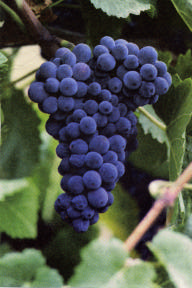 The All-American awards in the PinotFile are unique in that the list
includes trophy and cult Pinot Noirs that often are not tasted by
tasting panels of major wine publications because they are not
submitted for judging. The PinotFile awards thus encompass every
Pinot Noir produced in California and Oregon.
The All-American awards in the PinotFile are unique in that the list
includes trophy and cult Pinot Noirs that often are not tasted by
tasting panels of major wine publications because they are not
submitted for judging. The PinotFile awards thus encompass every
Pinot Noir produced in California and Oregon.